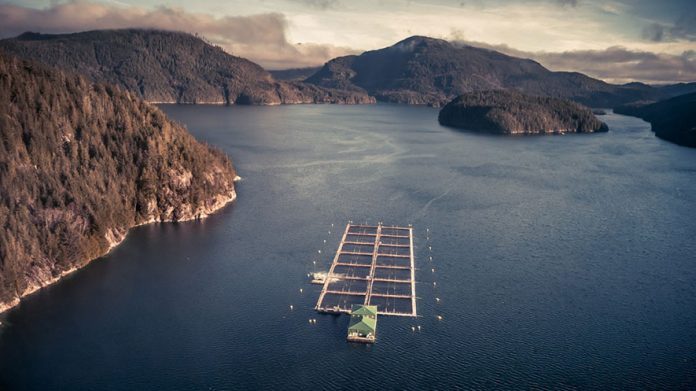The company is now looking at how they can transfer and adapt systems to Norwegian conditions.
“In Canada, harmful algae occurs regularly in the water around our farms, including the one that hit Northern Norway recently. Some of the challenges in Canada has also been to separate harmless algae from harmful algae, which can be difficult for the naked eye to see. We have great sympathy with those affected salmon farmers because we know exactly what they are going through,” said Grieg Seafoodcommunications manager Kristina Furnes to SalmonBusiness.
Grieg has installed a system for monitoring and avoiding algae damage across all of its sites in British Columbia (BC), Canada.
“We’ve collected harmful algae data for years and have developed a comprehensive system of sensors in the plants that monitor relevant environmental parameters and now use a data platform and satellite images from NASA as part of the monitoring,” said Furnes.
Air system for retrieving deeper water
If harmful algae are identified, several measures can be taken.

“We stop feeding, and in addition, each cage is equipped with air systems that provide an upstream of deeper clean water, which will keep the algae out of the cage,” Furnes said.
The system is still under development, but Grieg believes that they are starting to see effects.
“Last year, we had fewer mortalities from harmful algae than we think we would have had without the system. We also avoid starving the fish unnecessarily when salmon farmers are assured that algae are not toxic. In 2018, we reduced the number of hunger days by 41 per cent on our facilities in the Esperanza area, where harmful algae can be a challenge,” said Furnes.
Daily analysis
All of Grieg’s BC facilities have a digital microscope that communicates with a database to identify the algae type and whether it is harmful to the fish.
“In the past, the salmon farmers had to submit water samples for analysis, which took several days. Now they can even add data from the water samples into the system, and thus identify whether the algae are harmful. We have also employed our own algae experts who assist the farmers and have built up a library of different types of algae that we can use in the identification work. We are now working on using more machine learning in surveillance,” said Furnes.
“This is part of our digitisation strategy, where we have been inspired by agriculture, which has come further than the aquaculture industry on digitisation. The purpose is to give the salmon farmer several facts about what is happening in the present time in the cage, and thus a better and more precise decision-making basis so that the person can make good decisions in everyday life,” she added.
Norway
Furnes emphasised that they do not know to what extent the system had functioned during the recent algea event in Northern Norway (which killed over eight million fish last month) especially since it happened so quickly. But Grieg has started the job of finding a solution to the challenge of harmful algae.
“We are now also looking at how we can transfer this to Norway and adapt the systems to Norwegian conditions. We have very good algae experts in the company, and have faith in further developing the use of large data and machine learning in this work,” said Furnes.
As of Tuesday, June 18, Norway’s Directorate of Fisheries put out the final figures for the salmon deaths from the algal bloom in Nordland and Troms (Northern Norway) almost two weeks after the last reported algae mortality. Preliminary figures indicate that 8.2 million individuals died with a total weight of 13,432 tonnes.


